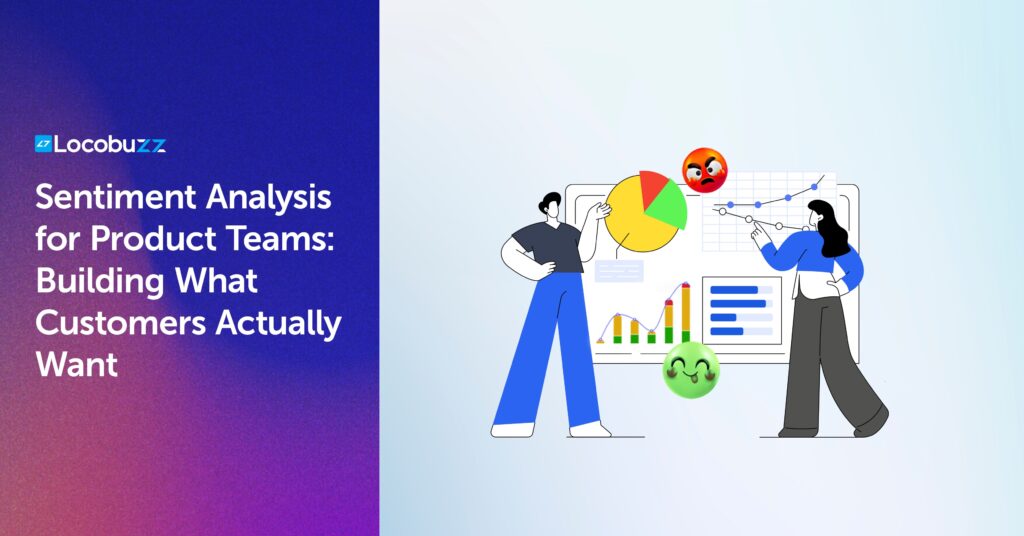3 Crore+ Mentions, 25 Lakh+ Tickets, 15 Seconds: Locobuzz is Built for Scale, Engineered for Speed, & Trusted for Accuracy
Timing is everything when it comes to customer experience. Miss a mention, delay a response, or overlook a review, and you might lose more than just a moment. Today, when our average attention span has dropped all the way to only 8 seconds, brands no longer have the luxury to respond slowly. Every customer interaction is a window of opportunity or a risk. And, the speed at which that window opens and closes determines the outcome. Processing over 55 million customer data points annually and delivering real-time insights in under 15 seconds, Locobuzz combines speed with precision at scale. It’s more than just a platform that listens – it responds faster, understands deeper, and scales wider, ensuring your customer experience is always a step ahead. We bring precision to every customer touchpoint – shaping experience, one interaction at a time! Let’s take a closer look at how Locobuzz is engineered to deliver speed, accuracy, and scale as a default, not a feature. Speed That Puts You On The Map Before You Even Notice When a customer tags your brand, leaves a review, or comments on your post, there’s a small, critical window to respond. At Locobuzz, we ensure that this window is 15 seconds – from the moment the mention is made to the moment it’s fully enriched and ready for action by your team. Here’s what’s happening behind the scenes: Scale That Proves the Platform’s Power Locobuzz isn’t just built to listen, it’s built to listen at scale without compromising on speed or efficiency. Here’s the volume that the platform recently processed in a month: Metric Monthly Volume Mentions Captured 3.74+ Cr (37,475,697) User Mentions 3.42+ Cr (34,198,233) Brand Posts Tracked 32.77+ Lakh (3,277,549) Tickets Created 28.64+ Lakh (2,864,955) Tickets Closed 19.97+ Lakh (1,997,414) Replies Sent 12.15+ Lakh (1,215,290) Unique Customers Interacted 5.03+ Lakh (503,318) These numbers are not projections, they’re actual platform usage volumes. But, how does Locobuzz handle this kind of traffic seamlessly? Auto-Scaling Infrastructure The platform dynamically adjusts compute capacity during volume spikes. No human intervention needed. Whether it’s a PR crisis or a festive season campaign, Locobuzz keeps up. Microservices Architecture Each service – routing, analytics, enrichment – runs independently. If one encounters a load, only that part scales up, keeping the rest lean and efficient. Thread Management to Eliminate Bottlenecks With advanced thread pooling using T-3459 configuration across secondary servers, Locobuzz avoids thread starvation even under extreme concurrency, enabling peak load handling with zero slowdowns. Zero Downtime Experience This architecture ensures no single point of failure. Real-time performance stays stable even under peak loads. Backed by Enterprise Grade Architecture The platform is built on a backbone of over 400 SQL Server databases configured with AlwaysOn Availability Groups, ensuring built-in failover. If any node fails, another takes over instantly — there’s no room for disruption. Accuracy That Brands Can Trust Speed and volume are meaningless without accuracy. What makes Locobuzz dependable is its precision-first approach: Enrichment Quality Benchmarking: Each enrichment model (sentiment, topic, intent) is benchmarked for <300ms performance and high-confidence outputs before being deployed. Contextual Intelligence: The platform goes beyond keyword analysis. It considers user history, platform tone, language nuances, and prior sentiment, making insights more reliable. Learning Loop: Agent outcomes, customer reactions, and ticket trends are constantly fed back into the engine, making the system more intelligent over time. Low-Latency Querying with Redis Caching: To maintain real-time speed even at scale, high-frequency queries are cached using Redis, which eliminates repetitive database hits and dramatically improves response latency. Side Quest: A Migration Story That Speaks Volumes About Our Efficiency Locobuzz’s platform isn’t just high-performance on paper, it’s been tested under extreme conditions multiple times. Let’s look at one such instance – During a major infrastructure migration, cloud engineers estimated it would take ~45 days to move 48 terabytes of live data, with up to 5 days of downtime. The Locobuzz team completed it in just 2 days, and with zero downtime. It was proof of solid performance under extreme pressure. The agility wasn’t just technical, it was cultural. Locobuzz Is Made for the Moment & for Faster CX With all systems built for speed, accuracy, and scale, brands using Locobuzz achieve: 45% faster response times Intelligent ticket routing with full enrichment Real-time campaign sentiment tracking Customer trust built through timely, relevant engagement Everything is designed to ensure that brands never miss a moment. Your customers don’t wait. Your insights can’t lag. And, your responses must be smart and fast. Locobuzz is built to power this level of performance, every single day. From crores of mentions to individual customer interactions, Locobuzz makes speed, accuracy, and scale not just possible, but effortless. It’s in our DNA!
 Skip to content
Skip to content








